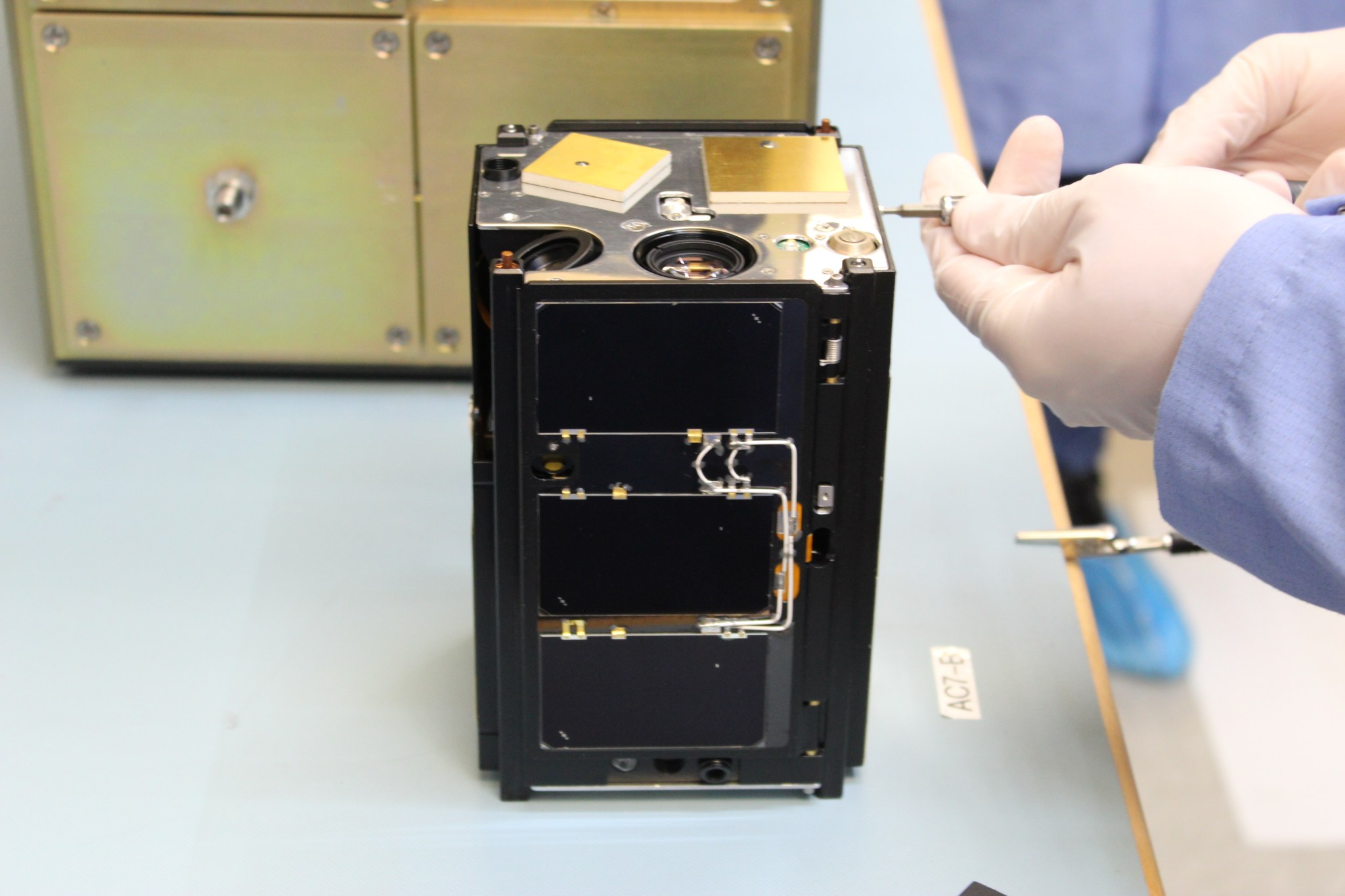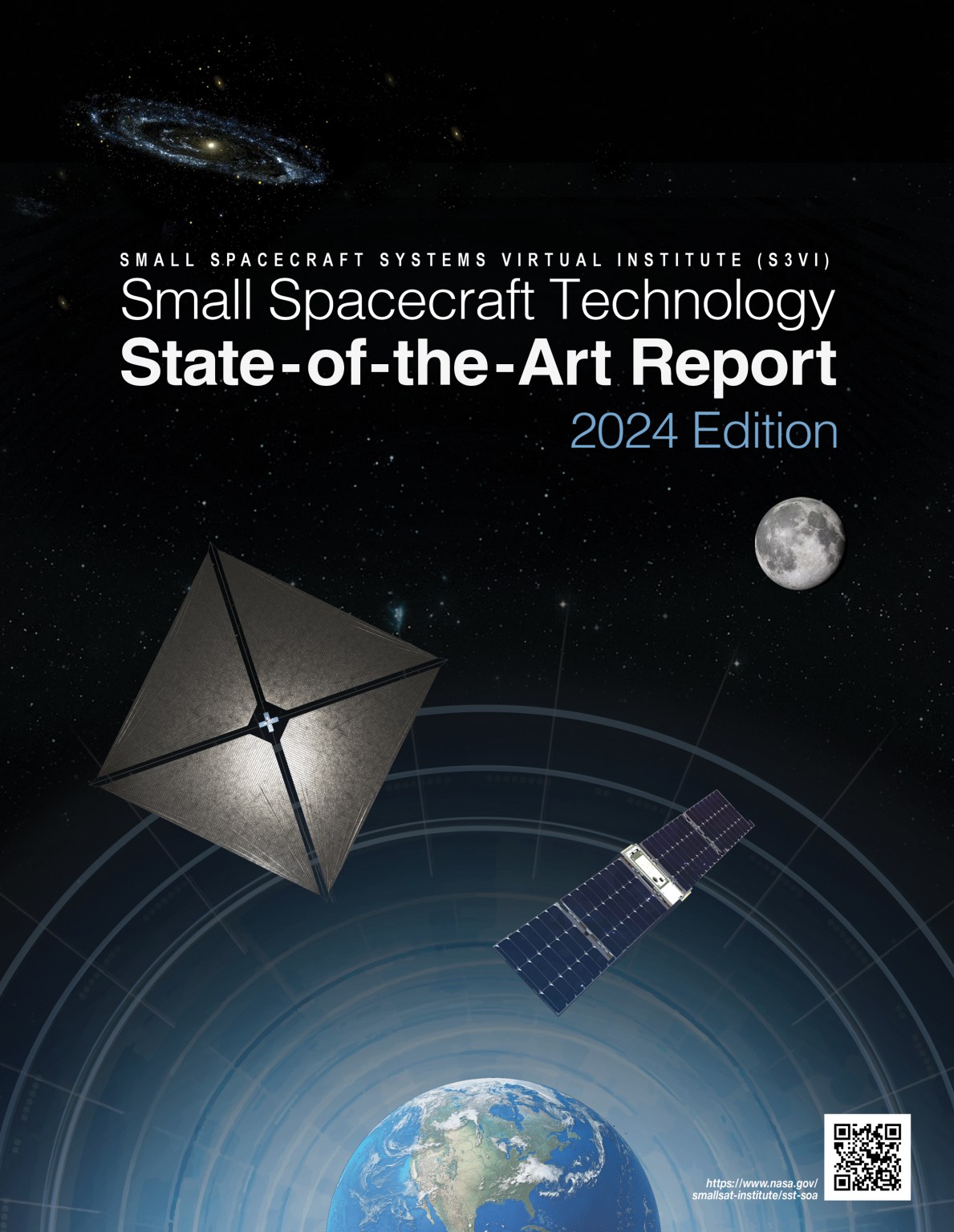In low-Earth-orbit since early December 2017, the Optical Communications and Sensor Demonstration (OCSD) mission is addressing two cross-cutting capabilities of value to many future small spacecraft missions: high-speed optical transmission of data and small spacecraft proximity operations. The OCSD project is developing and leveraging technologies that consist of a low power laser communication system, proximity sensors, and a compact water- based propulsion system to enable the demonstration of technology firsts in these two areas.
The OCSD project consists of three 1.5-unit (1.5U) CubeSats launched as secondary payloads on two separate missions. Each CubeSat is about 4 inches x 4 inches x 6.7 inches (10 centimeters x 10 centimeters x 17 centimeters) and weighs approximately 5 pounds (2.5 kilograms). The first OCSD mission, with one satellite, launched on Oct. 8, 2015 aboard an Atlas V rocket from Vandenberg Air Force Base in California. This first OCSD flight was a risk-reduction mission that allowed some checkout of the star trackers and important subsystems including power, camera, GPS, radio, and deployment mechanisms. It also allowed calibration and tool refinements to support the operational second flight of OCSD.
The second OCSD mission, with two satellites, launched November 12, 2017 on the Cygnus Resupply Mission (OA-8) from the Mid-Atlantic Regional Spaceport, Wallops Flight Facility, Virginia. Modified to incorporate the lessons learned during the first mission, the two satellites entered the operational phase of the mission in April to demonstrate the first-ever high-speed laser communication from a CubeSat to a ground station, as well as to demonstrate an optical communications uplink to a CubeSat for the first time. To date, OCSD has successfully demonstrated 200 megabits per second (Mb/s) optical communications to a 30 cm telescope on the ground.
The proximity sensors developed for this mission to enable relative position measurement between the two small satellites will perform a capability not previously demonstrated. The proximity operations demonstration will involve relative position measurements using cameras, beacons, laser range finders, and relative maneuvering using variable drag and a water-based propulsion system on board each spacecraft. To date, the thrusters have been used to maneuver the two satellites to within 20 feet of one another. Upcoming operations for the spacecraft include the execution of more complex maneuvers and to demonstrate the operation of the proximity sensors.
The optical communications system on OCSD differs from other space-based laser communication systems because the laser is hard-mounted to the spacecraft body. The beam is pointed by controlling the orientation of the entire spacecraft. This makes the laser system much more compact than anything previously flown in space. The attitude control system developed for these satellites includes a pair of miniature star trackers, which are cameras that measure the position of stars for navigational purposes. The attitude-control system of the OCSD spacecraft, using these star trackers, has demonstrated pointing with an accuracy better than 0.05 degrees, which is 20 times the precision previously demonstrated in a satellite of this size.
The OCSD mission addresses the need for low-cost sensors that small spacecraft can use to assist in maneuvering and operating safely in close proximity to other spacecraft or objects in space. Capabilities in proximity operations will enable multiple small spacecraft to operate cooperatively during science or exploration missions, to approach another spacecraft or object for in-space observation or servicing, or to connect small spacecraft together to form larger systems or networks in space.
The potential for optical communications technology will not reach its limit with OCSD; it is anticipated that relatively simple upgrades, primarily to the attitude control system, will enable download rates of 2.5 gigabits per second (Gb/s) or higher. This would open the possibility of using small satellites in applications, such as synthetic aperture radar or hyperspectral Earth imaging, that produce volumes of data far beyond the capacity of radio-frequency downlink systems. It is also possible to use these satellites as data relay nodes in low-Earth orbit; a modest constellation of small satellites has the potential to provide low- latency, high-rate communications as a service for other satellites in orbit around Earth.
The OCSD satellites are developed and operated by The Aerospace Corporation of El Segundo, California.
The OCSD mission is managed and funded by the Small Spacecraft Technology Program (SSTP) within the Space Technology Mission Directorate. The SSTP expands U.S. capability to execute unique missions through rapid development and in space demonstration of capabilities for small spacecraft applicable to exploration, science, and the commercial space sector. The SSTP will enable new mission architectures through the use of small spacecraft with goals to expand their reach to new destinations, and challenging new environments.
For more information about the SSTP, visit: www.nasa.gov/smallspacecraft
https://www.nasa.gov/spacetech/feature/CubeSat_Missions_Pushing_Boundaries_of_Technology
For more information about OCSD, please contact:
Richard Welle
Senior Scientist, Space Science
Applications Laboratory The Aerospace Corporation
Richard.P.Welle@aero.org
Roger C. Hunter
Small Spacecraft Technology Program Manager
Space Technology Mission Directorate
NASA Ames Research Center
Roger.C.Hunter@nasa.gov
Christopher E. Baker
Small Spacecraft Technology Program Executive
Space Technology Mission Directorate
NASA Headquarters
Christopher.E.Baker@nasa.gov




























